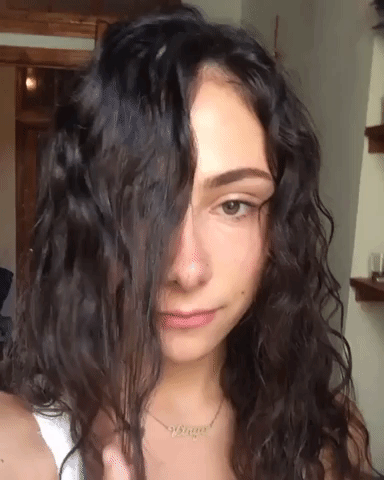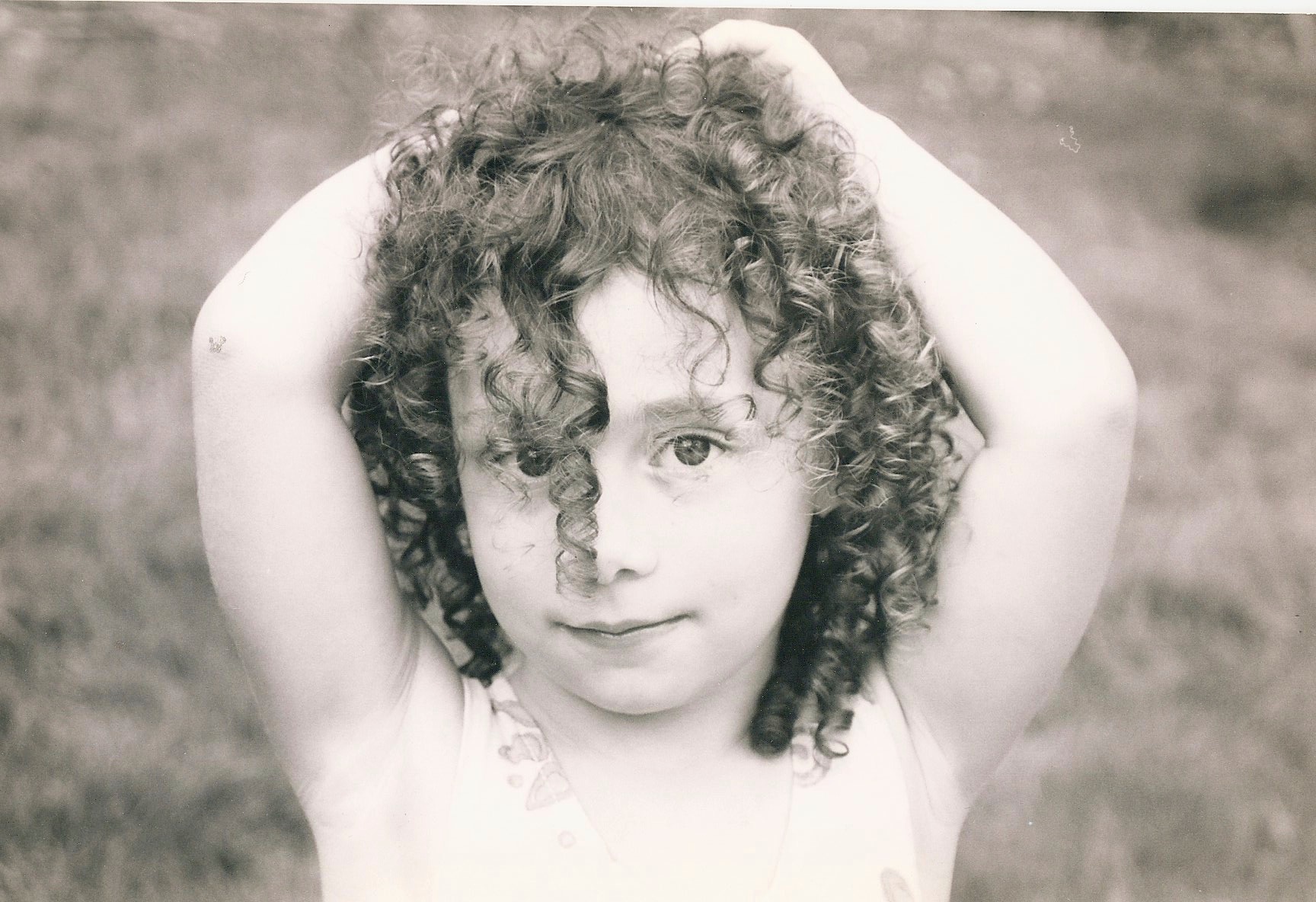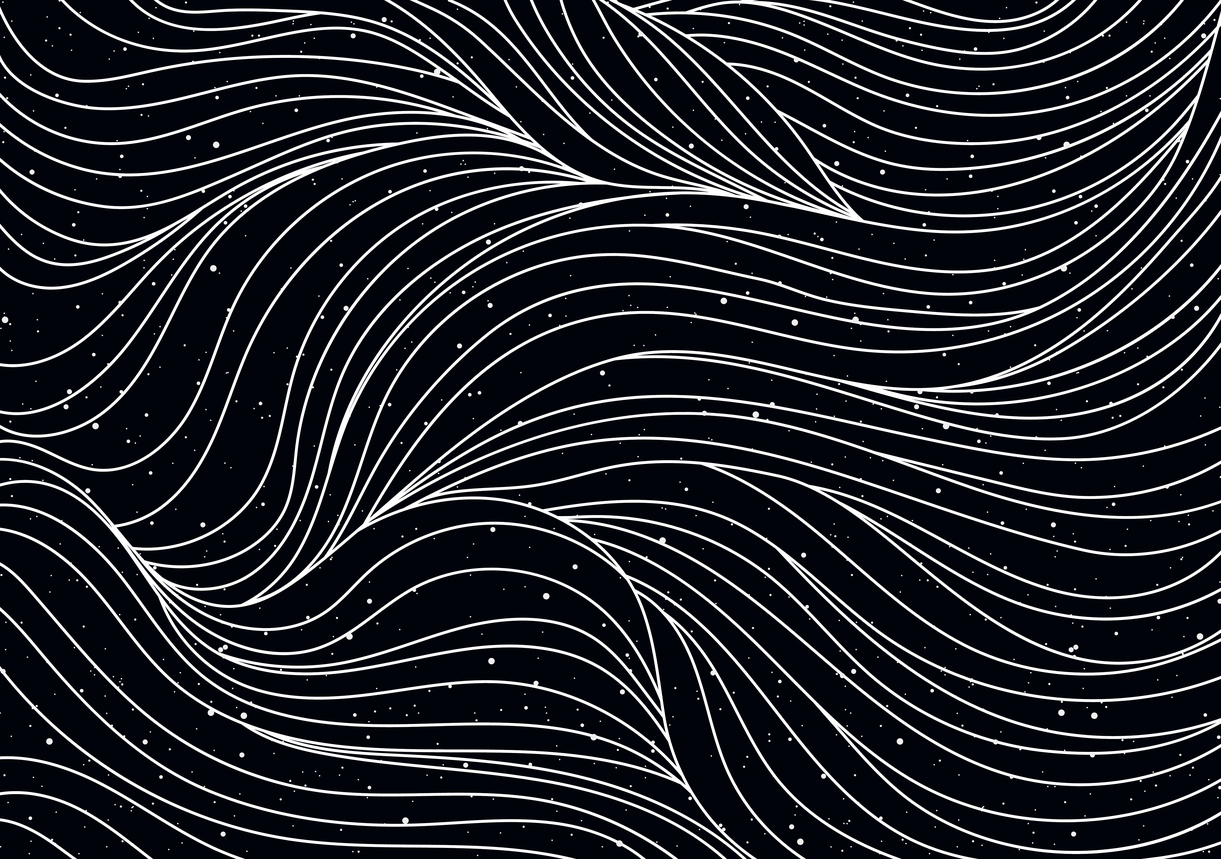Recently, I have been absolutely hating my hair.
Objectively, my hair is fine. I wash, brush, and air dry. It is flat at the top and curly at the bottom. It’s not particularly thin or thick. It is medium-length. Depending on the weather, it is medium-frizzy. I am wed to my middle part, and every time I try to divorce it I end up right back where I started.
To phrase it curtly, it looks very Jewish.

Subjectively, on the other hand, I have decided that my hair is terrible. It doesn’t look good long, and it wouldn’t look good short. This is more of a general dissatisfaction with the way I look rather than a specific itch I can scratch with a trip to the salon. I don’t know what I’m missing; I don’t know what I want. What I do know is that it isn’t this.
In August 2014, the New York Times declared that curly hair, like mine, was in again. In a piece titled “Curls Get Their Groove Back,” one interviewee said that “whether or not men she dated preferred her with a blowout became a kind of litmus test for the viability of the relationship.” The article also cites artists like Lorde, Rita Ora, Petra Collins, and St. Vincent as curly-haired trendsetters, and quotes hairdressers who speak of a rise in the “model off-duty” look. A 2014 Harper’s Bazaar article titled “Air Drying is the New Blowout” declared, “Perfect blowouts with round-brushed ends and swingy bounciness have been falling out of favor with fashion girls for a while now.”
Two weeks ago, I went to Drybar for a blowout. Upon arrival, the stylist sat me in the chair and asked for my follicular vision. “I want it to look natural,” I said. “Like, not too done. Air dried.” She fingered my hair –– curly and matted, obviously air dried –– and looked at me funny. “You sure?” she asked. “Then what’s the point of the blowout?”
She didn’t understand that by “air dried,” I meant “Gigi Hadid’s hair air dried” and not “my Jewess hair, air dried.” I assumed there was an explicit understanding of such. But we forget that “air dried” today is not as much a way to wear your natural hair as it is, still like the blowout days of yore, a way to emulate someone else’s.
In other words, it is great that “natural,” air dried hair is in. But whose natural hair is it? Or, consider this: When a part of you dictated by DNA is not on trend, which are you willing to give up?

The most pervasive Jewish stereotype is that of appearance –– a Jewish girl has a tush, a nose, and a head full of thick, curly, dark hair. But what if the relationship between “Jewish” and “hair” goes deeper than skin? Wanting a change is fine. Usually, change feels good. But when I hate my hair for what it is, I feel a pang of guilt. The infiltration of on-trend hair into my subconscious has incited a reckoning of what my natural hair actually represents.
The oldest mention of hair in Judaism is that in the story of Samson, whose long, never-been-cut locks are the secret source of his strength. One night, Delilah, Samson’s illicit lover, shaves his head in his sleep. He weakens immediately, and is sent to work in a prison with his eyes gouged out. Parts of the Torah imply that a woman’s hair would not be cut unless it was a means of degradation or a sign of mourning. Many men have told me that they don’t like short hair on women; many women have told me that they would never cut their hair short.
Today, the relationship between Judaism and hair popularly manifests itself in two ways beyond the Jewish hair/Jew-fro stereotype –– in the female hair coverings and the male payot. Hair coverings, like a hat, scarf, or wig known as a sheitel, are used by many Orthodox women. The Bible doesn’t mention the use of wigs, nor does it explicitly state that married women must keep their hair covered. The Talmud, however, waxes more poetic on what a Jewish woman and her hair cannot do: It states that hair covering is a requirement; that exposed hair in public is grounds for divorce; and that female hair is sexually erotic and therefore must not be exposed to men.
Men are encouraged to do the opposite. Leviticus 19:27 states, “You shall not round off the pe’ah [sides, corners] of your head,” which has led to the practice of growing out payot — the long, curled sideburns religious men let hang in front of their ears. Some contemporary scholars argue that Orthodox Jews grow payot as a means of rebellion against secularization. Payot are a distinguishable trait that links a group of people together — it is the physical manifestation of a shared Jewish identity. Sort of like my hair, too.
If my hair holds the weight of where I come from, I hate hating it. First of all, hating anything is a terrible feeling, but secondly, and more importantly, I love being Jewish. It seems unnatural to dislike a part of myself that characterizes me as such.
Thus, my recent wave of “I need to change my hair” has had me considering the recreation of a lob I did in 2014. When I’m feeling truly rebellious, I’ve even considered going — gasp — blonde, which is something I will probably never do.
In a time where there is always another product to test, another serum to slap on, or another solution for an aesthetic problem I didn’t know I had, what am I doing to the identity I was born with when I change the way I look? Can we wipe away our religious and cultural identity when we mask it with a tub of Kiehl’s?
At the end of the day, my hair will be my hair will be my hair. Some days I will love it, some days I will hate it, and all days I will have it. That is, unless I shave it off — under which circumstance, I will still, utterly and wholly, be me.




